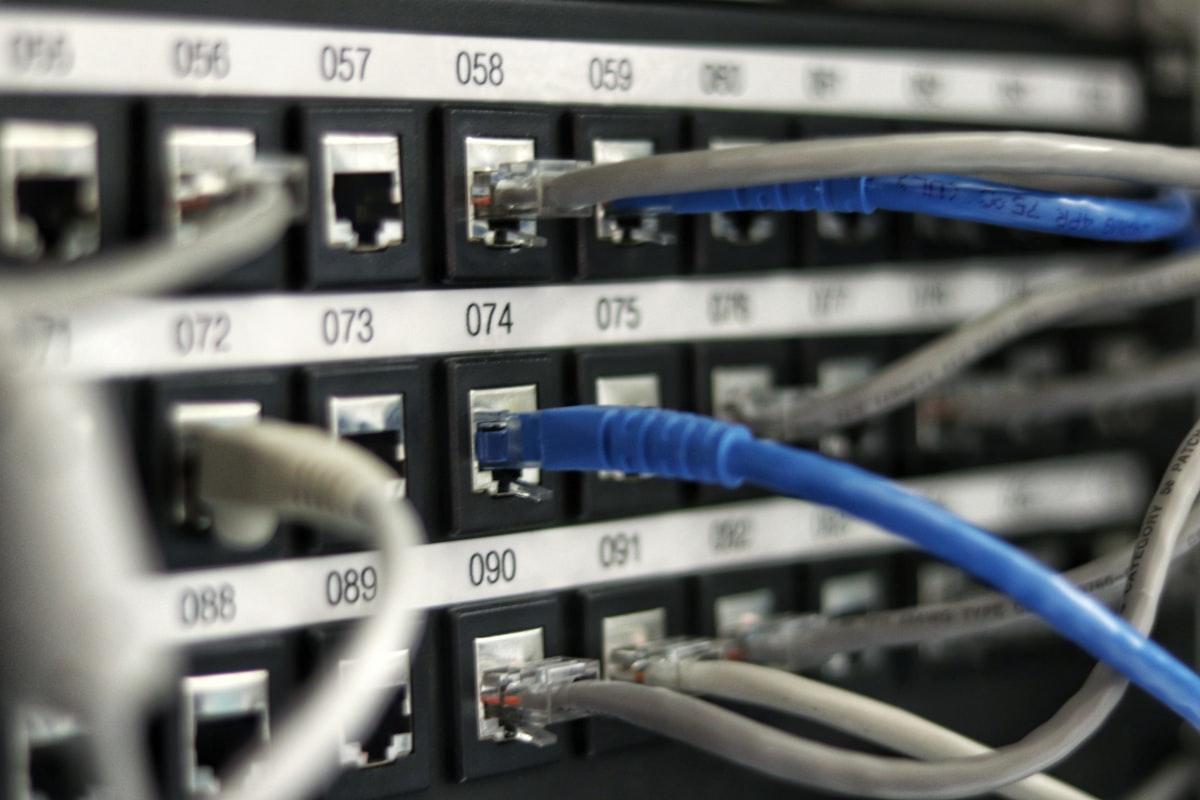Updating my home network

I've recently rearranged my home office space, and I now have a standing desk. Well, technically it's a sit-stand desk as it can be either, but that's not really the point. As a result of changing to a desk which adjusts, I need to ensure that any network cables which go to it are long enough to accommodate the variable distance from the switch. When I first set it up, I didn't - at least not without running one of them over the top of the table, and generally making things untidy.
The obvious solution is to just get (or make) longer network cables to account for the length. That would work, but has the drawback of still having a lot of cables snaking all over my extra (non-adjustable) desk! I also have a lot of other things taking space on that desk, which would be nicer if it's out the way. Basically, I have the perfect excuse to get myself a small network cabinet, and have a mini home-lab!
First I catalogued what I currently have which needs a network cable, and came up with:
- WAN uplink
- NAS storage
- Personal laptop
- Work laptop
- Work desk phone
- Wife's work laptop
- Printer
- Raspberry Pi 4
- Raspberry Pi 3
- Wireless access point
Now for the big issue....I currently only have an 8-port switch. Which is why I've not been able to use everything at once.
For most of the last 12 months, I've had to unplug my work desk phone each evening for my wife to use that cable for her work laptop. I've also not had the Raspberry Pis plugged in, so I've not had Pi Hole running, nor have my cloud backups been running.
I am aware I could run the laptops off the wireless network, but the access point isn't as stable as I would like. It also only has a 100 mbps wired uplink, so there's a serious performance limitation when using it.
I also have a smart TV in one of the bedrooms which currently uses the main wireless network. The wireless isn't great on that, despite the connection appearing strong. The TV has a network port, so I could wire that for a more stable connection.
That's a lot of things to have currently, and to expand to in the near future. That and a plan for some additional Raspberry Pis means I need at least a 16 port switch - that will need 1 rack unit.
I know that at some point I want to bring a patch panel into the cabinet to help make things really tidy, so that's an additional rack unit needed. The height of my NAS is just under 3U in height, and I plan on using a Power Distribution Unit (PDU) later to help keep the power cables tidy, so an addition 1U needed for that.
Knowing that I can fill space for 6u straight away (or very quickly) I knew I needed a 9u or 12u rack. Possibly larger, but I wanted to fit it under the side desk where everything is currently stacked on top.
Shopping Around
The big expenses which were going to be part of this were the cabinet and the switch.
Cabinets were all around the same price, but instead of getting a floor standing one, I ended up saving money by getting a 12u wall mount cabinet which would just sit on the floor. I also bought a cantilever shelf for the rack which the NAS will sit on, along with a few other things initially (like Raspberry Pis).
The switch was always going to be the difficult one to get at a reasonable price. I wanted a switch with Power over Ethernet (PoE), 24 ports and, ideally, manageable so I can separate traffic on the network for additional security. Basically, tinker and break things.
The cost of switches has increased as their availability throughout the pandemic has decreased. That meant either spending a lot of money on a new one, or take a chance on a used on. As switches are designed to last close to forever under regular use, and people are upgrading to 10G networks, I decided to go used. I managed to get a Netgear Prosafe GS728TP for only £60. That's cheaper than most new 8-port gigabit PoE switches. It's also 10% of the price of a new, current-gen switch.
Basically, for under £200 I managed to go from a desktop full of computer chaos to having a tidy desk and an organised section of networking stuff which makes the geek in me happy.
Next steps
Next up will be adding in a patch panel and getting the PDU so there's fewer trailing power cables around the cabinet itself. After that I'd like to get a 1U Raspberry Pi rackmount case or the fun, but somewhat overkill 2U 16 Raspberry Pi mount. It would take a while to fill (I'm not sure I ever would), but it would look cool.
There's going to be a lot of custom cable lengths being created in the future. I'd like to bring all my devices into the cabinet so it's in a single place rather than have switches dotted all over. I can see this being an ever evolving project where kit gets swapped in and out over time, and the whole thing evolves.
Hopefully I can upgrade to a bigger rack, and put it all in my garage in the future. That probably won't get the all important spouse approval for a long time...but I can have my dreams.


